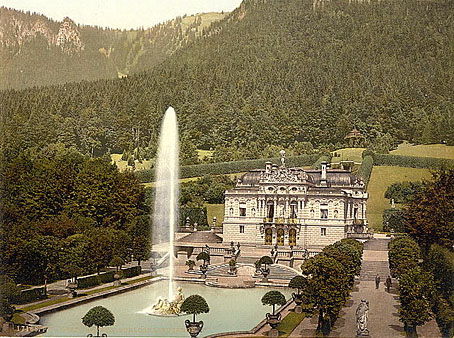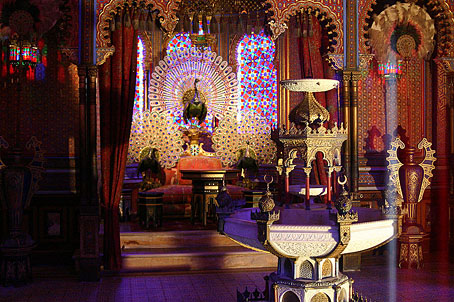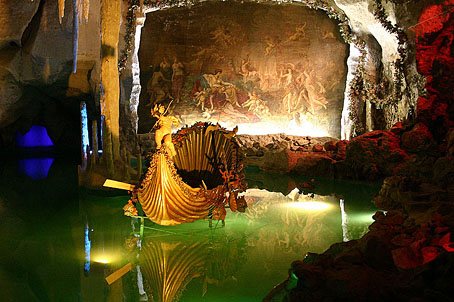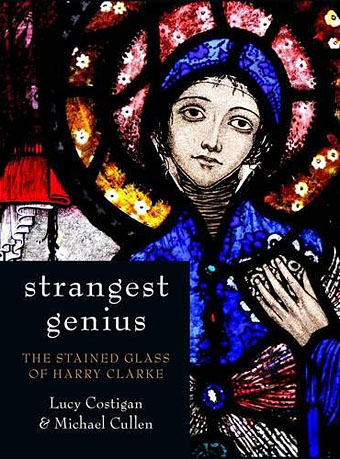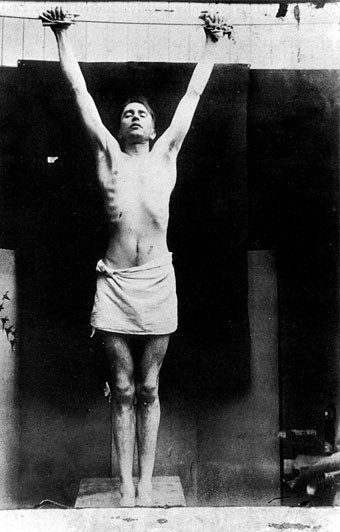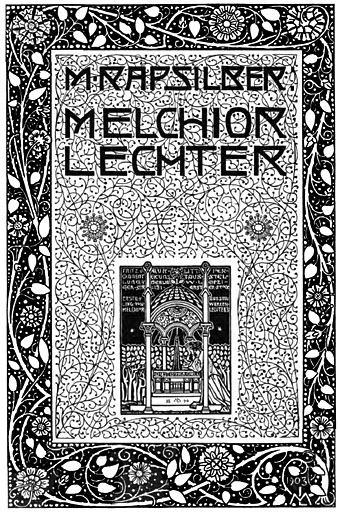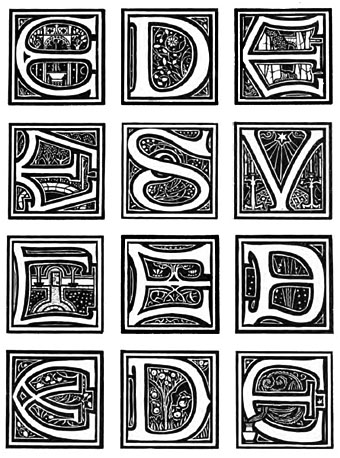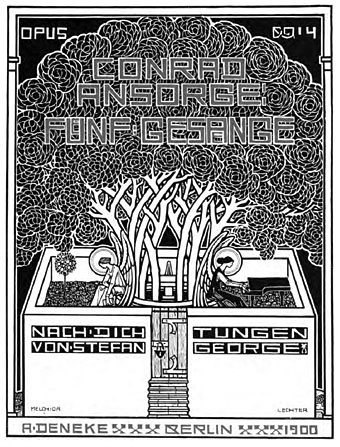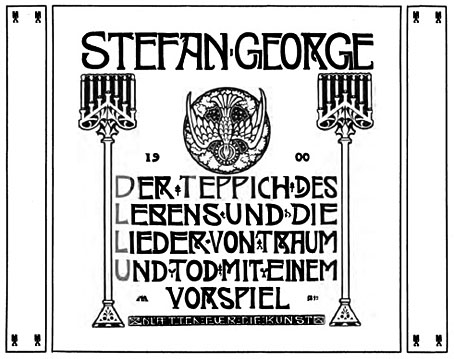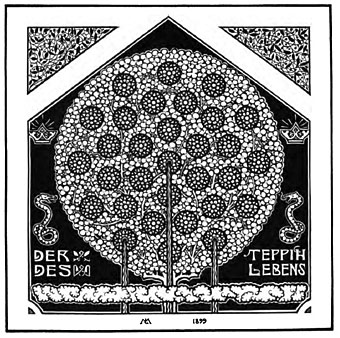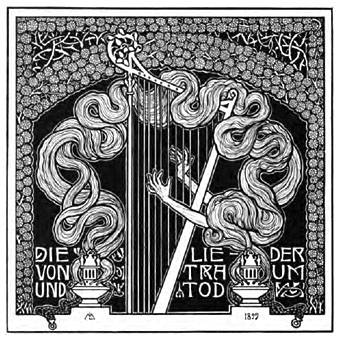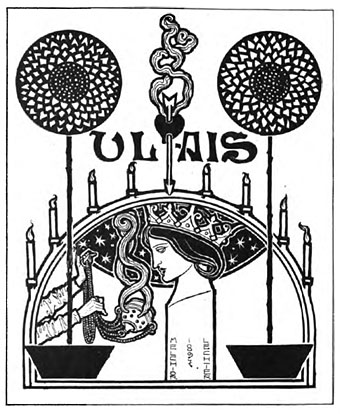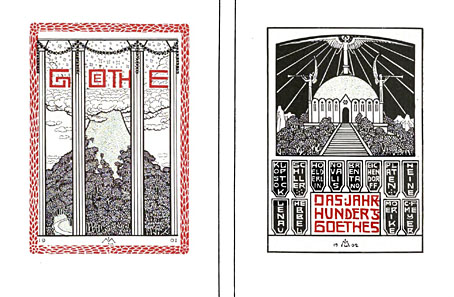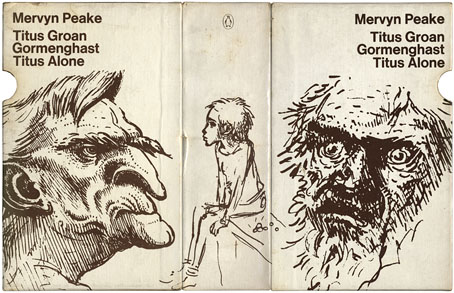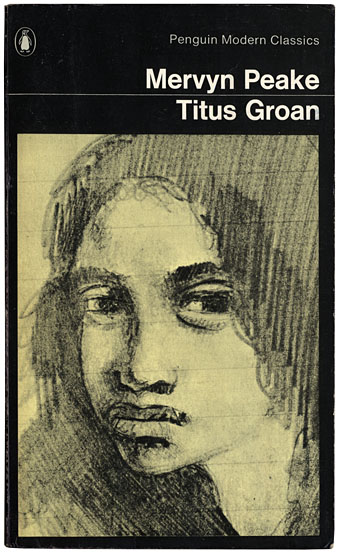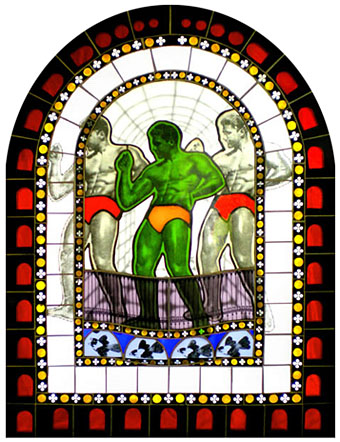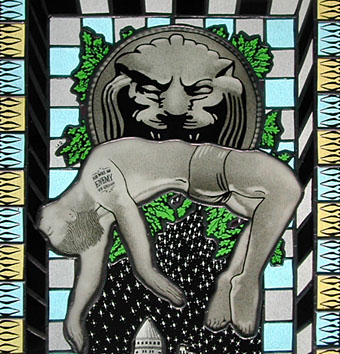More Ludwigiana. Schloss Linderhof was Ludwig II of Bavaria’s miniature Versailles at Oberammergau and is a key location in Visconti’s film about the King. The house itself is a riot of gilded rococo which isn’t really to my taste but you can make your own judgement by taking a tour at the palace website or browsing the photos at Wikimedia Commons.
Of greater interest is the Moorish Kiosk in the palace grounds, a small pavilion originally created for the Paris exposition of 1867. The outside is a typical piece of Orientalist architecture while inside there’s some beautiful stained glass and a splendid Peacock Throne. This doesn’t feature in Visconti’s film, unfortunately, but the Venus Grotto does.
Philippe Jullian’s Dreamers of Decadence (1971) contains some pages about Ludwig and the inspiration he gave to Symbolist artists and poets. Reports of places like the Venus Grotto were among those inspirations, and Jullian recounts a description by actor Joseph Kainz of his first visit to Linderhof. The scene is played out in Visconti’s film almost to the letter:
All of a sudden the rock moved; an opening appeared through which we entered a long corridor, brightly lit with a red light. Along the walls of the grotto the King’s servants stood in line.
Still following the servants who were leading the way, I walked to the end of the corridor, as far as what appeared to be a natural opening in the rock. Through this opening there poured a sea of blue light. The interior of the grotto looked like a huge, dazzling sapphire, whose flickering brilliance spread over the craggy walls, entered every tiny crack, and cast a sort of magic veil over every object. I had stopped on the threshold, behind an overhanging rock, dumbfounded by the grandiose splendour that surrounded me; I was breathless with amazement. The ceiling of the grotto was vaulted, like that of a cathedral. I was inside the Venusberg.
I took a step forward and stopped again. The rock which had concealed me until then. had prevented me from seeing on my right a lake of astonishingly limpid water, lit by a sky-blue light. On it there glided two snow-white swans, while on the shores stood a tall man, all alone, and apparently deep in thought: this was the King.
For a moment I gazed at his fine head, his broad shoulders, his remarkably white hands which were casually tossing pieces of bread to the two swans; I also noticed the bright star made up of sapphires which was fastened to his hat.
He shook me warmly by the hand, releasing me from the feeling of depression which had affected me till then. Then the King took me up a path leading to the top of a hill in front of us. On the top of this hill there was a table made of sea-shells which stood on a large conch supported by crystal feet. Near this table there was a seat made of the same materials, and the servants brought along another. The King invited me to sit down, and supper was served.
Every quarter of an hour the King gave a signal and the lighting of the grotto changed; it turned red, then green, then blue, then gold, and into my imagination came memories of ancient legends and fabulous fairy-tales.
360 Cities has some panoramas of the Linderhof grounds with a view of the palace and one of the entrance to the Moorish Kiosk. As you’d expect, Flickr has a large collection of Linderhof photos while there’s also a pool of over five hundred images devoted to Ludwig II.
Previously on { feuilleton }
• Schloss Neuschwanstein

